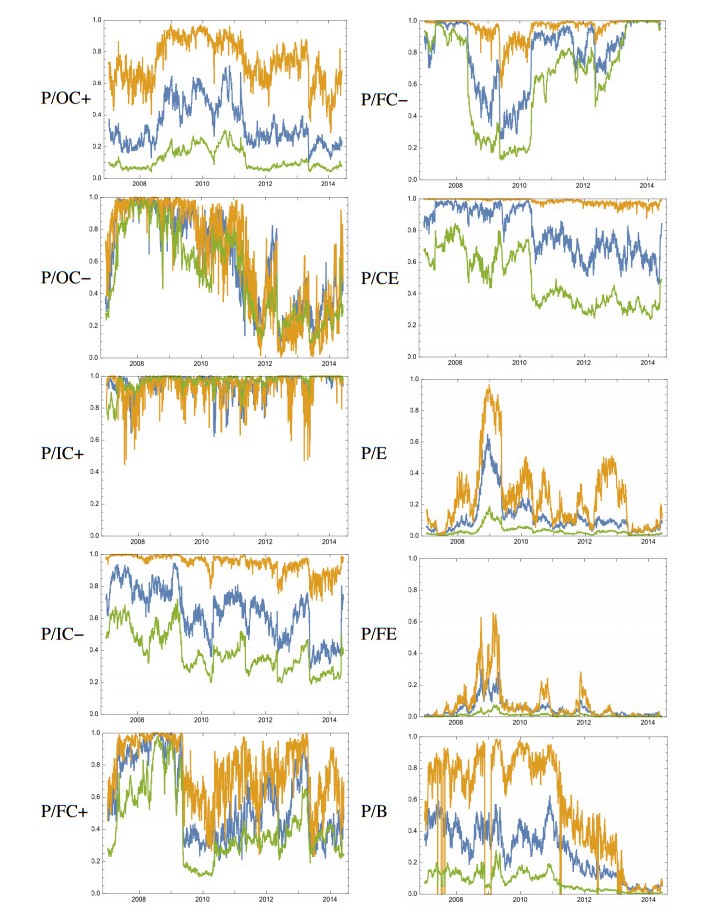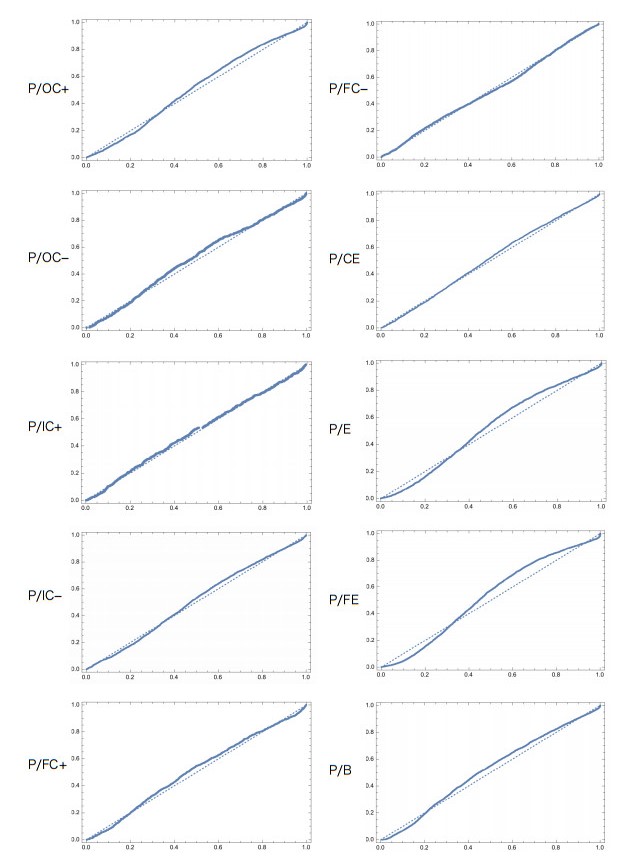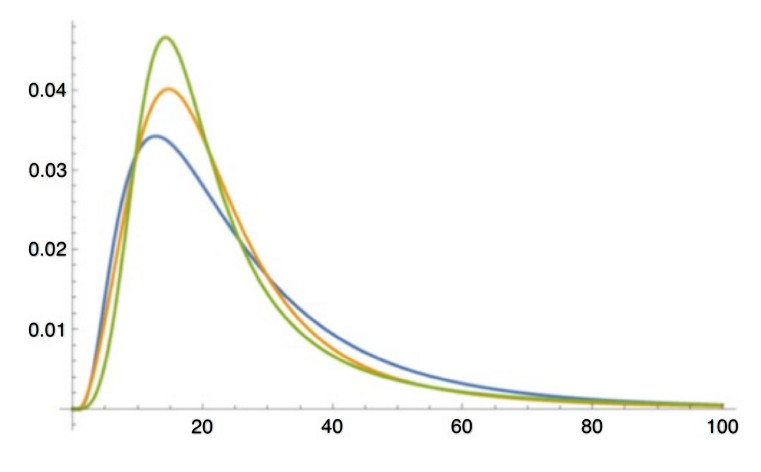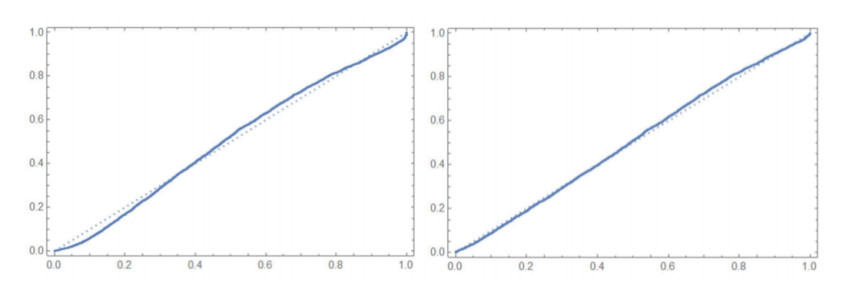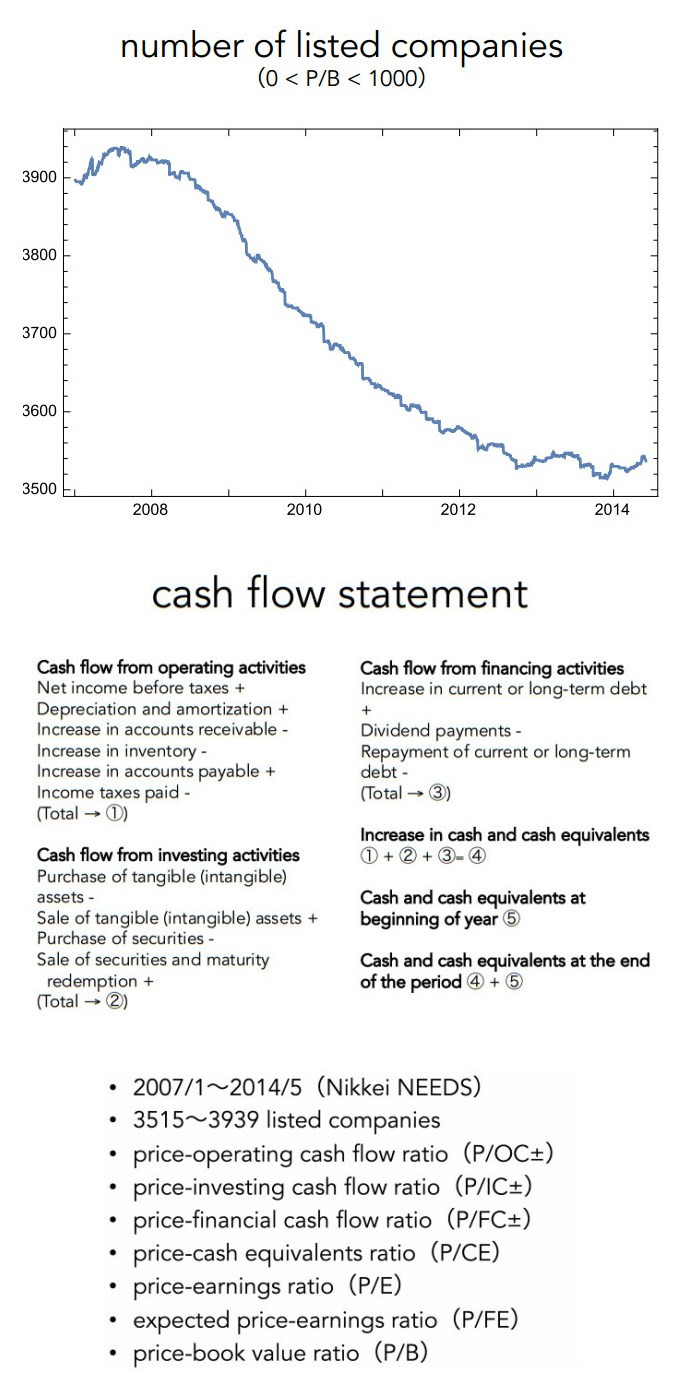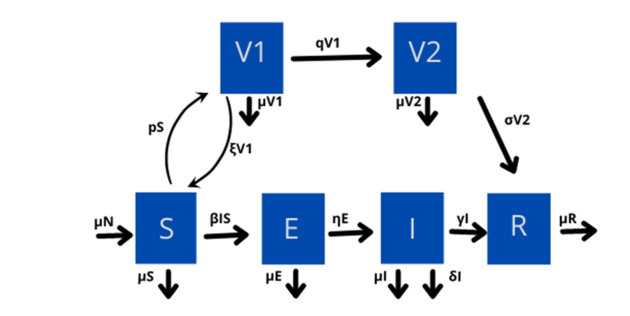|
[1]
|
P. A. Naik, K. M. Owolabi, J. Zu, M. U. D. Naik, Modeling the transmission dynamics of COVID-19 pandemic in caputo type fractional derivative, J. Multiscale Model., 12 (2021). https://doi.org/10.1142/S1756973721500062 doi: 10.1142/S1756973721500062

|
|
[2]
|
K. M. Safare, V. S. Betageri, D. G. Prakasha, P. Veeresha, S. Kumar, A mathematical analysis of ongoing outbreak COVID-19 in India through nonsingular derivative, Numer. Meth. Part. Differ. Equations., 37 (2021), 1282–1298. https://doi.org/10.1002/num.22579 doi: 10.1002/num.22579

|
|
[3]
|
K. S. Nisar, S. Ahmad, A. Ullah, K. Shah, H. Alrabaiah, M. Arfan, Mathematical analysis of SIRD model of COVID-19 with Caputo fractional derivative based on real data, Results Phys., 21 (2021), 103772. https://doi.org/10.1016/j.rinp.2020.103772 doi: 10.1016/j.rinp.2020.103772

|
|
[4]
|
P. A. Naik, M. Yavuz, S. Qureshi, J. Zu, S. Townley, Modeling and analysis of COVID-19 epidemics with treatment in fractional derivatives using real data from Pakistan, Eur. Phys. J. Plus, 135 (2020), 795. https://doi.org/10.1140/epjp/s13360-020-00819-5 doi: 10.1140/epjp/s13360-020-00819-5

|
|
[5]
|
F. Özköse, M. Yavuz, Investigation of interactions between COVID-19 and diabetes with hereditary traits using real data: A case study in Turkey, Comput. Biol. Med., 141 (2022), 105044. https://doi.org/10.1016/j.compbiomed.2021.105044 doi: 10.1016/j.compbiomed.2021.105044

|
|
[6]
|
P. Pandey, J. F. Gómez-Aguilar, M. K. A. Kaabar, Z. Siri, A. A. A. Mousa, Mathematical modeling of COVID-19 pandemic in India using Caputo-Fabrizio fractional derivative, Comput. Biol. Med., 145 (2022), 105518. https://doi.org/10.1016/j.compbiomed.2022.105518 doi: 10.1016/j.compbiomed.2022.105518

|
|
[7]
|
N. Sene, Analysis of the stochastic model for predicting the novel coronavirus disease, Adv. Differ. Equations, 568 (2020), 1–19. https://doi.org/10.1186/s13662-020-03025-w doi: 10.1186/s13662-020-03025-w

|
|
[8]
|
T. Sitthiwirattham, A. Zeb, S. Chasreechai, Z. Eskandari, M. Tilioua, S. Djilali, Analysis of a discrete mathematical COVID-19 model, Results Phys., 28 (2021), 104668. https://doi.org/10.1016/j.rinp.2021.104668 doi: 10.1016/j.rinp.2021.104668

|
|
[9]
|
S. Kumar, R. P. Chauhan, S. Momani, S. Hadid, Numerical investigations on COVID-19 model through singular and non-singular fractional operators, Numer. Methods Partial Differ. Equations, (2020), 1–27. https://doi.org/10.1002/num.22707 doi: 10.1002/num.22707

|
|
[10]
|
F. Özköse, M. Yavuz, M. T. Şenel, R. Habbireeh, Fractional order modelling of omicron SARS-CoV-2 variant containing heart attack effect using real data from the United Kingdom, Chaos Solitons Fractals, 157 (2022), 111954. https://doi.org/10.1016/j.chaos.2022.111954 doi: 10.1016/j.chaos.2022.111954

|
|
[11]
|
A. Atangana, Modelling the spread of COVID-19 with new fractal-fractional operators: Can the lockdown save mankind before vaccination?, Chaos Solitons Fractals, 136 (2020), 109860. https://doi.org/10.1016/j.chaos.2020.109860 doi: 10.1016/j.chaos.2020.109860

|
|
[12]
|
T. Sardar, S. S. Nadim, S. Rana, J. Chattopadhyay, Assessment of lockdown effect in some states and overall India: A predictive mathematical study on COVID-19 outbreak, Chaos Solitons Fractals, 139 (2020), 110078. https://doi.org/10.1016/j.chaos.2020.110078 doi: 10.1016/j.chaos.2020.110078

|
|
[13]
|
S. Choi, M. Ki, Analyzing the effects of social distancing on the COVID-19 pandemic in Korea using mathematical modeling, Epidemiol. Health, 42 (2020). https://doi.org/10.4178/epih.e2020064
|
|
[14]
|
D. Aldila, S. H. A. Khoshnaw, E. Safitri, Y. R. Anwar, A. R. Q. Bakry, B. M. Samiadji, et al., A mathematical study on the spread of COVID-19 considering social distancing and rapid assessment: The case of Jakarta, Indonesia, Chaos Solitons Fractals, 139 (2020), 110042. https://doi.org/10.1016/j.chaos.2020.110042 doi: 10.1016/j.chaos.2020.110042

|
|
[15]
|
D. Baleanu, M. Hassan Abadi, A. Jajarmi, K. Zarghami Vahid, J. J. Nieto, A new comparative study on the general fractional model of COVID-19 with isolation and quarantine effects, Alex. Eng. J., 61 (2022), 4779–4791. https://doi.org/10.1016/j.aej.2021.10.030 doi: 10.1016/j.aej.2021.10.030

|
|
[16]
|
Z. Memon, S. Qureshi, B. R. Memon, Assessing the role of quarantine and isolation as control strategies for COVID-19 outbreak: A case study, Chaos Solitons Fractals, 144 (2021), 110655. https://doi.org/10.1016/j.chaos.2021.110655 doi: 10.1016/j.chaos.2021.110655

|
|
[17]
|
A. M. Mishra, S. D. Purohit, K. M. Owolabi, Y. D. Sharma, A nonlinear epidemiological model considering asymptotic and quarantine classes for SARS CoV-2 virus, Chaos Solitons Fractals, 138 (2020), 109953. https://doi.org/10.1016/j.chaos.2020.109953 doi: 10.1016/j.chaos.2020.109953

|
|
[18]
|
A. Din, A. Khan, D. Baleanu, Stationary distribution and extinction of stochastic coronavirus (COVID-19) epidemic model, Chaos Solitons Fractals, 139 (2020), 110036. https://doi.org/10.1016/j.chaos.2020.110036 doi: 10.1016/j.chaos.2020.110036

|
|
[19]
|
P. Pandey, Y. M. Chu, J. F. Gómez-Aguilar, H. Jahanshahi, A. A. Aly, A novel fractional mathematical model of COVID-19 epidemic considering quarantine and latent time, Results Phys., 26 (2021), 104286. https://doi.org/10.1016/j.rinp.2021.104286 doi: 10.1016/j.rinp.2021.104286

|
|
[20]
|
Y. Gu, S. Ullah, M. A. Khan, M. Y. Alshahrani, M. Abohassan, M. B. Riaz, Mathematical modeling and stability analysis of the COVID-19 with quarantine and isolation, Results Phys., 34 (2022), 105284. https://doi.org/10.1016/j.rinp.2022.105284 doi: 10.1016/j.rinp.2022.105284

|
|
[21]
|
K. N. Nabi, P. Kumar, V. S. Erturk, Projections and fractional dynamics of COVID-19 with optimal control strategies, Chaos Solitons Fractals, 145 (2021), 110689. https://doi.org/10.1016/j.chaos.2021.110689 doi: 10.1016/j.chaos.2021.110689

|
|
[22]
|
A. K. Srivastav, P. K. Tiwari, P. K. Srivastava, M. Ghosh, Y. Kang, A mathematical model for the impacts of face mask, hospitalization and quarantine on the dynamics of COVID-19 in India: Deterministic vs. stochastic, Math. Biosci. Eng., 18 (2020), 182–213. https://doi.org/10.3934/mbe.2021010 doi: 10.3934/mbe.2021010

|
|
[23]
|
P. Riyapan, S. E. Shuaib, A. Intarasit, A mathematical model of COVID-19 pandemic: A case study of Bangkok, Thailand, Comput. Math. Methods Med., 2021 (2021). https://doi.org/10.1155/2021/6664483 doi: 10.1155/2021/6664483

|
|
[24]
|
F. Karim, S. Chauhan, J. Dhar, Analysing an epidemic–economic model in the presence of novel corona virus infection: capital stabilization, media effect, and the role of vaccine, Eur. Phys. J.: Spec. Top., (2022), 1–18. https://doi.org/10.1140/epjs/s11734-022-00539-0 doi: 10.1140/epjs/s11734-022-00539-0

|
|
[25]
|
B. B. Fatima, M. A. Alqudah, G. Zaman, F. Jarad, T. Abdeljawad, Modeling the transmission dynamics of middle eastern respiratory syndrome coronavirus with the impact of media coverage, Results Phys., 24 (2021), 104053. https://doi.org/10.1016/j.rinp.2021.104053 doi: 10.1016/j.rinp.2021.104053

|
|
[26]
|
J. K. K. Asamoah, M. A. Owusu, Z. Jin, F. T. Oduro, A. Abidemi, E. O. Gyasi, Global stability and cost-effectiveness analysis of COVID-19 considering the impact of the environment: using data from Ghana, Chaos Solitons Fractals, 140 (2020), 110103. https://doi.org/10.1016/j.chaos.2020.110103 doi: 10.1016/j.chaos.2020.110103

|
|
[27]
|
P. A. Naik, J. Zu, M. B. Ghori, M. Naik, Modeling the effects of the contaminated environments on COVID-19 transmission in India, Results Phys., 29 (2021), 104774. https://doi.org/10.1016/j.rinp.2021.104774 doi: 10.1016/j.rinp.2021.104774

|
|
[28]
|
World Health Organization, COVID19 Vaccine Tracker, Report of World Health Organization, https://covid19.trackvaccines.org/agency/who/ (13-Jun-2022).
|
|
[29]
|
Indian Council of Medical Research, Vaccine information, https://vaccine.icmr.org.in/ (13-Jun-2022).
|
|
[30]
|
M. Yavuz, F. Ö. Coşar, F. Günay, F. N. Özdemir, A New Mathematical Modeling of the COVID-19 Pandemic Including the Vaccination Campaign, Open J. Modell. Simul., 9 (2021), 299–321. https://doi.org/10.4236/ojmsi.2021.93020 doi: 10.4236/ojmsi.2021.93020

|
|
[31]
|
B. H. Foy, B. Wahl, K. Mehta, A. Shet, G. I. Menon, C. Britto, Comparing COVID-19 vaccine allocation strategies in India: A mathematical modelling study, Int. J. Infect. Dis., 103 (2021), 431–438. https://doi.org/10.1016/j.ijid.2020.12.075 doi: 10.1016/j.ijid.2020.12.075

|
|
[32]
|
R. Ikram, A. Khan, M. Zahri, A. Saeed, M. Yavuz, P. Kumam, Extinction and stationary distribution of a stochastic COVID-19 epidemic model with time-delay, Comput. Biol. Med., 141 (2022), 105115. https://doi.org/10.1016/j.compbiomed.2021.105115 doi: 10.1016/j.compbiomed.2021.105115

|
|
[33]
|
K. Liu, Y. Lou, Optimizing COVID-19 vaccination programs during vaccine shortages, Infect. Dis. Modell., 7 (2022), 286–298. https://doi.org/10.1016/j.idm.2022.02.002 doi: 10.1016/j.idm.2022.02.002

|
|
[34]
|
P. Kumar, V. S. Erturk, M. Murillo-Arcila, A new fractional mathematical modelling of COVID-19 with the availability of vaccine, Results Phys., 24 (2021), 104213. https://doi.org/10.1016/j.rinp.2021.104213 doi: 10.1016/j.rinp.2021.104213

|
|
[35]
|
O. Akman, S. Chauhan, A. Ghosh, S. Liesman, E. Michael, A. Mubayi, et al., The Hard Lessons and Shifting Modeling Trends of COVID-19 Dynamics: Multiresolution Modeling Approach, Bull. Math. Biol., 3 (2022), 1–30. https://doi.org/10.1007/s11538-021-00959-4 doi: 10.1007/s11538-021-00959-4

|
|
[36]
|
M. Amin, M. Farman, A. Akgül, R. T. Alqahtani, Effect of vaccination to control COVID-19 with fractal fractional operator, Alex. Eng. J., 61 (2022), 3551–3557. https://doi.org/10.1016/j.aej.2021.09.006 doi: 10.1016/j.aej.2021.09.006

|
|
[37]
|
A. Beigi, A. Yousefpour, A. Yasami, J. F. Gómez-Aguilar, S. Bekiros, H. Jahanshahi, Application of reinforcement learning for effective vaccination strategies of coronavirus disease 2019 (COVID-19), Eur. Phys. J. Plus, 609 (2021), 1–22. https://doi.org/10.1140/epjp/s13360-021-01620-8 doi: 10.1140/epjp/s13360-021-01620-8

|
|
[38]
|
M. L. Diagne, H. Rwezaura, S. Y. Tchoumi, J. M. Tchuenche, A Mathematical Model of COVID-19 with Vaccination and Treatment, Comput. Math. Methods Med., 2021 (2021). https://doi.org/10.1155/2021/1250129 doi: 10.1155/2021/1250129

|
|
[39]
|
I. M. Bulai, R. Marino, M. A. Menandro, K. Parisi, S. Allegretti, Vaccination effect conjoint to fraction of avoided contacts for a Sars-Cov-2 mathematical model, Math. Modell. Numer. Simul. with Appl., 1 (2021), 56–66. https://doi.org/10.53391/mmnsa.2021.01.006 doi: 10.53391/mmnsa.2021.01.006

|
|
[40]
|
A. Omame, D. Okuonghae, U. K. Nwajeri, C. P. Onyenegecha, A fractional-order multi-vaccination model for COVID-19 with non-singular kernel, Alex. Eng. J., 61 (2022), 6089–6104. https://doi.org/10.1016/j.aej.2021.11.037 doi: 10.1016/j.aej.2021.11.037

|
|
[41]
|
O. A. M. Omar, R. A. Elbarkouky, H. M. Ahmed, Fractional stochastic modelling of COVID-19 under wide spread of vaccinations: Egyptian case study, Alex. Eng. J., 61 (2022), 8595–8609. https://doi.org/10.1016/j.aej.2022.02.002 doi: 10.1016/j.aej.2022.02.002

|
|
[42]
|
A. K. Paul, M. A. Kuddus, Mathematical analysis of a COVID-19 model with double dose vaccination in Bangladesh, Results Phys., 35 (2022), 105392. https://doi.org/10.1016/j.rinp.2022.105392 doi: 10.1016/j.rinp.2022.105392

|
|
[43]
|
I. Podlubny, Fractional differential equations: an introduction to fractional derivatives, fractional differential equations, to methods of their solution and some of their, 1st Edition. Academic Press, San Diego, 1998.
|
|
[44]
|
R. L. Magin, Fractional Calculus in Bioengineering, Crit. Rev. Biomed. Eng., 32 (2004), 1-104. http://dx.doi.org/10.1615/critrevbiomedeng.v32.i1.10 doi: 10.1615/critrevbiomedeng.v32.i1.10

|
|
[45]
|
D. Baleanu, K. Diethelm, E. Scalas, J. J. Trujillo, Fractional Calculus: Models and Numerical Methods, World Scientific, New Jersey, 2012.
|
|
[46]
|
H. Joshi, B. K. Jha, Fractional-order mathematical model for calcium distribution in nerve cells, Comput. Appl. Math., 56 (2020), 1–22. https://doi.org/10.1007/s40314-020-1082-3 doi: 10.1007/s40314-020-1082-3

|
|
[47]
|
E. Hanert, E. Schumacher, E. Deleersnijder, Front dynamics in fractional-order epidemic models, J. Theor. Biol., 279 (2011), 9–16. https://doi.org/10.1016/j.jtbi.2011.03.012 doi: 10.1016/j.jtbi.2011.03.012

|
|
[48]
|
H. Joshi, B. K. Jha, Chaos of calcium diffusion in Parkinson's infectious disease model and treatment mechanism via Hilfer fractional derivative, Math. Modell. Numer. Simul. with Appl., 1 (2021), 84–94. https://doi.org/10.53391/mmnsa.2021.01.008 doi: 10.53391/mmnsa.2021.01.008

|
|
[49]
|
O. Diekmann, J. A. P. Heesterbeek, M. G. Roberts, The construction of next-generation matrices for compartmental epidemic models, J. R. Soc. Interface, 7 (2020), 873–885. https://doi.org/10.1098/rsif.2009.0386 doi: 10.1098/rsif.2009.0386

|
|
[50]
|
M. Y. Li, H. L. Smith, L. Wang, Global dynamics of an seir epidemic model with vertical transmission, SIAM J. Appl. Math., 62 (2001), 58–69. https://doi.org/10.1137/S0036139999359860 doi: 10.1137/S0036139999359860

|
|
[51]
|
C. Vargas-De-León, Volterra-type Lyapunov functions for fractional-order epidemic systems, Commun. Nonlinear Sci. Numer. Simul., 24 (2015), 75–85. https://doi.org/10.1016/j.cnsns.2014.12.013 doi: 10.1016/j.cnsns.2014.12.013

|
|
[52]
|
A. Omame, M. Abbas, A. Abdel-Aty, Assessing the impact of SARS-CoV-2 infection on the dynamics of dengue and HIV via fractional derivatives, Chaos Solitons Fractals, 162 (2022), 112427. https://doi.org/10.1016/j.chaos.2022.112427 doi: 10.1016/j.chaos.2022.112427

|
|
[53]
|
A. Omame, M. E. Isah, M. Abbas, A. Abdel-Aty, C. P. Onyenegecha, A fractional order model for Dual Variants of COVID-19 and HIV co-infection via Atangana-Baleanu derivative, Alex. Eng. J., 61 (2022), 9715–9731. https://doi.org/10.1016/j.aej.2022.03.013 doi: 10.1016/j.aej.2022.03.013

|
|
[54]
|
O. H. Mohammed, H. A. Salim, Computational methods based laplace decomposition for solving nonlinear system of fractional order differential equations, Alex. Eng. J., 57 (2018), 3549–3557. https://doi.org/10.1016/j.aej.2017.11.020 doi: 10.1016/j.aej.2017.11.020

|
|
[55]
|
M. Y. Ongun, The Laplace Adomian Decomposition Method for solving a model for HIV infection of CD4+T cells, Math. Comput. Modell., 53 (2011), 597–603. https://doi.org/10.1016/j.mcm.2010.09.009 doi: 10.1016/j.mcm.2010.09.009

|
|
[56]
|
F. Haq, K. Shah, G. Ur Rahman, M. Shahzad, Numerical solution of fractional order smoking model via laplace Adomian decomposition method, Alex. Eng. J., 57 (2018), 1061–1069. https://doi.org/10.1016/j.aej.2017.02.015 doi: 10.1016/j.aej.2017.02.015

|
|
[57]
|
D. Baleanu, S. M. Aydogn, H. Mohammadi, S. Rezapour, On modelling of epidemic childhood diseases with the Caputo-Fabrizio derivative by using the Laplace Adomian decomposition method, Alex. Eng. J., 59 (2020), 3029–3039. https://doi.org/10.1016/j.aej.2020.05.007 doi: 10.1016/j.aej.2020.05.007

|
|
[58]
|
M. Ur Rahman, S. Ahmad, R. T. Matoog, N. A. Alshehri, T. Khan, Study on the mathematical modelling of COVID-19 with Caputo-Fabrizio operator, Chaos Solitons Fractals, 150 (2021), 111121. https://doi.org/10.1016/j.chaos.2021.111121 doi: 10.1016/j.chaos.2021.111121

|
|
[59]
|
O. Nave, U. Shemesh, I. HarTuv, Applying Laplace Adomian decomposition method (LADM) for solving a model of Covid-19, Comput. Methods Biomech. Biomed. Eng., 24 (2021), 1618–1628. https://doi.org/10.1080/10255842.2021.1904399 doi: 10.1080/10255842.2021.1904399

|
|
[60]
|
A. Abdelrazec, D. Pelinovsky, Convergence of the Adomian decomposition method for initial-value problems, Numer. Methods Partial Differ. Equations, 27 (2011), 749–766. https://doi.org/10.1002/num.20549 doi: 10.1002/num.20549

|
|
[61]
|
A. A. Kilbas, H. M. Srivastava, J. J. Trujillo, Theory and applications of fractional differential equations. Elsevier, New York.
|
|
[62]
|
Worldometer, India COVID - Coronavirus Statistics, https://www.worldometers.info/coronavirus/country/india/ (11-Jun-2022).
|
|
[63]
|
Countrymeters, India population (2022) live, https://countrymeters.info/en/India. (11-Jun-2022).
|
|
[64]
|
MacroTrends, India Birth Rate 1950-2019, https://www.macrotrends.net/countries/IND/india/birth-rate (11-Jun-2022).
|
|
[65]
|
MacroTrends, India Infant Mortality Rate 1950-2022, https://www.macrotrends.net/countries/IND/india/infant-mortality-rate (12-Jun-2022).
|
|
[66]
|
N. Chitnis, J. M. Hyman, J. M. Cushing, Determining Important Parameters in the Spread of Malaria Through the Sensitivity Analysis of a Mathematical Model, Bull. Math. Biol. 1272 (2008), 1272–1296. https://doi.org/10.1007/s11538-008-9299-0 doi: 10.1007/s11538-008-9299-0

|









 DownLoad:
DownLoad:
